Diabase (dolerite) is a dark-colored igneous rock. It is compositionally equivalent to gabbro and basalt but texturally between them. Diabase is a common rock type. It occurs mostly in shallow intrusions (dikes and sills) of basaltic composition. It grades to basalt when it solidifies rapidly and to gabbro when more time is given to the crystals to grow. The term “microgabbro” is sometimes used to refer to such rocks.
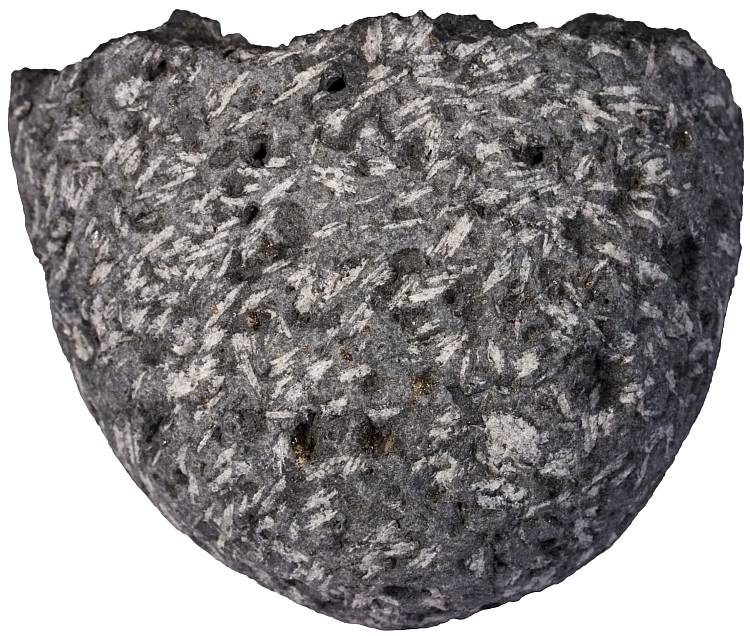
Diabase with notable plagioclase phenocrysts from La Palma, Canary Islands. Width of sample is 5 cm.
Diabase is composed of plagioclase feldspar (mostly labradorite) and pyroxene (augite). The crystals that make up dolerite are usually visible to the naked eye, but sometimes porphyritic rocks of basaltic composition with pyroxene and especially plagioclase phenocrysts are also named that way. Ophitic texture (randomly oriented plagioclase laths enclosed by pyroxene grains) is a characteristic feature of diabase. Minerals of lesser importance are magnetite, olivine, ilmenite, hornblende, biotite, chlorite, etc.
The term “diabase” has a long and complicated history. It was first defined by a French geologist Alexandre Brongniart in 1807. Brongniart named so rocks that were composed of feldspar and hornblende. Another famous French geologist René Just Haüy preferred to use the term “diorite” for such a mineral assemblage and this concurs with the contemporary use. It was Brongniart himself who decided to abandon the term in 1827. However, it somehow managed to survive, mostly thanks to German scholars who continued to use it but now to refer to the rocks which were composed of pyroxene and plagioclase.
It was a German geologist Harry Rosenbusch in 1877 who decided to introduce the age criterion and possibly created a problem that persists to this day. According to him, only rocks of pre-Tertiary (pre-Cenozoic) age were named diabase. In Great Britain the term “dolerite” was used (although it too originates from France, this term was first used by Haüy in 1822) which has a meaning of a fresh-looking diabase and the term “diabase” itself was left to altered and old dolerites only. The age criterion is not in use anymore, but both “dolerite” and “diabase” continue to be used. These two terms are synonymous.
Diabase is a popular ornamental stone. Crushed stone is often made of it and it seems to be a popular choice to use in sauna heaters.

Diabase is a popular ornamental stone. This sample of dolerite is from a tombstone workshop. Unknown locality. The width of the view is 25 cm.
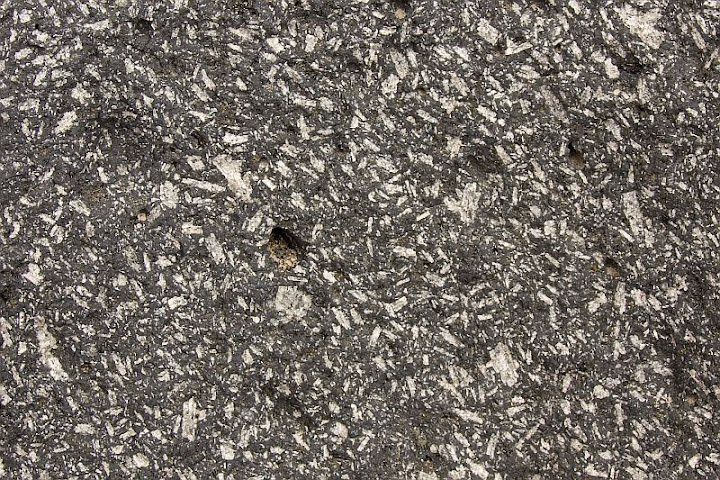
Mushroom Rock in Death Valley is carved from dolerite. Width of the view is about 25 cm.

White phenocrysts are plagioclase and black phenocrysts are pyroxene crystals. Tenerife, Canary Islands. The width of the view is 14 cm.
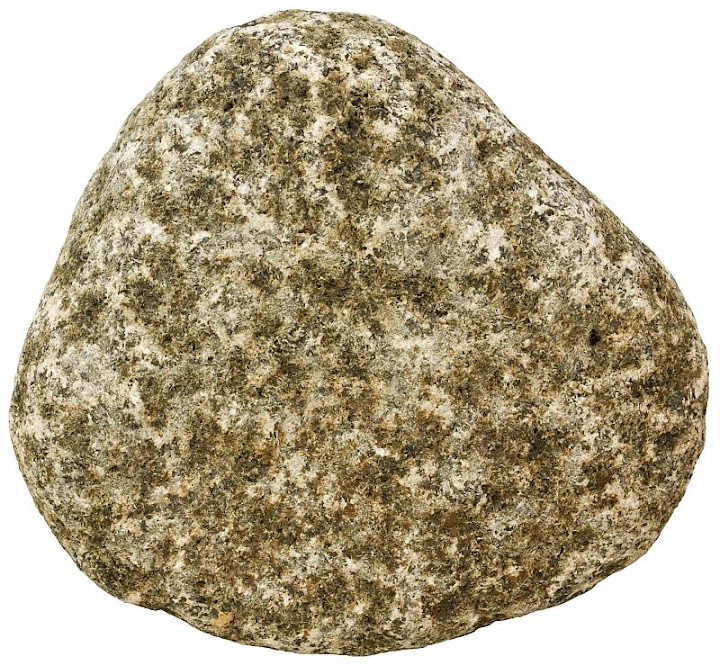
Dolerite from Portrush, Northern Ireland. The width of the view is 9 cm.

Diabase (microgabbro) from Estonia. This sample is taken from a drillcore. The width of the view is 4 cm.

Porphyritic mafic volcanic rock with large plagioclase phenocrysts. Brown spots are left by sea animals that were attached to the rock. The Isle of Mull, Scotland. The rock is 8 cm in length.
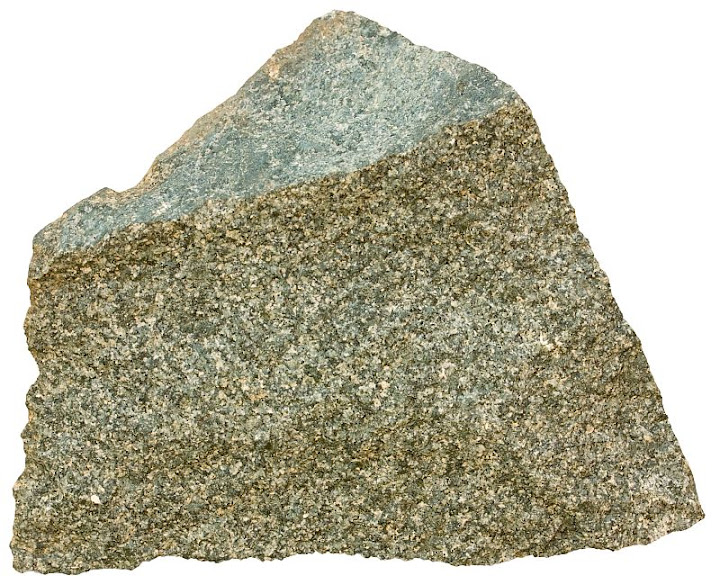
A piece of a dolerite dike of the Troodos sheeted dike complex in Cyprus.
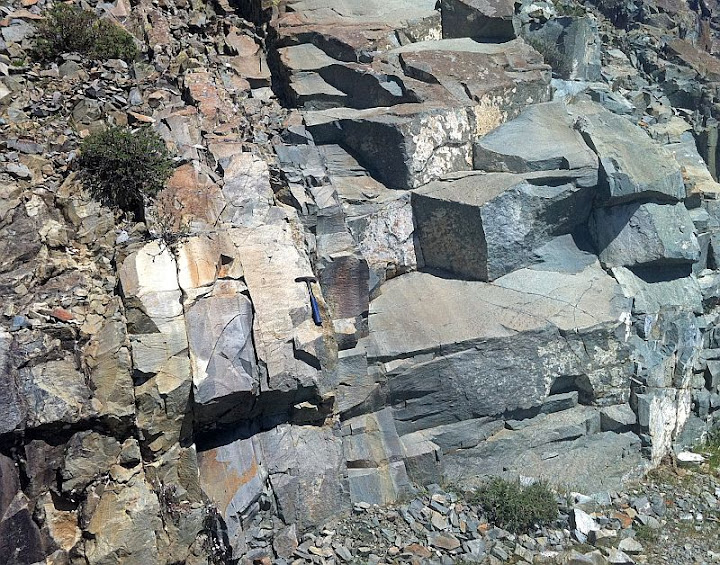
Sheeted dikes in Cyprus are composed of dolerite.

A contact between basalt (on the left) and dolerite in Cyprus. The basaltic dike is fine-grained because it is younger and was chilled (it lost heat rapidly to the diabase dike on the right).
Leave a Reply